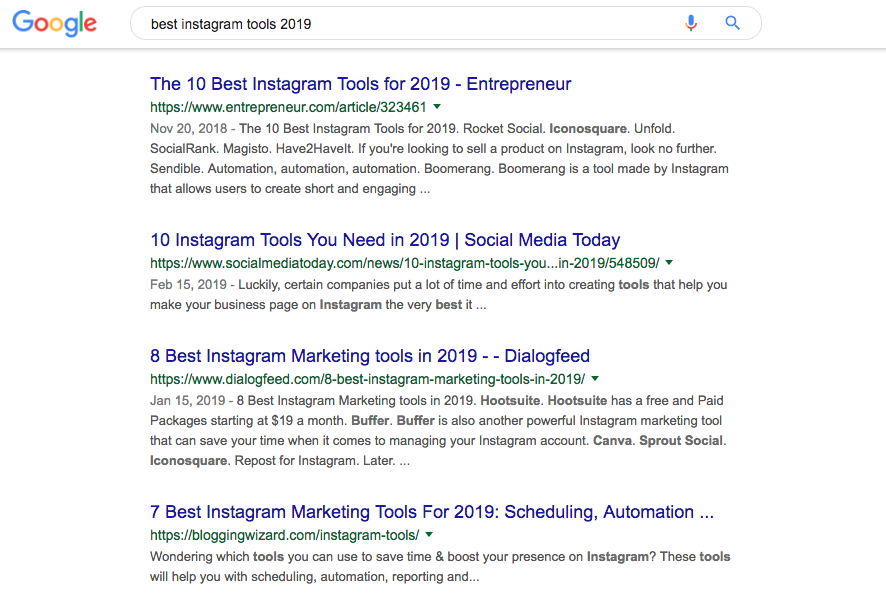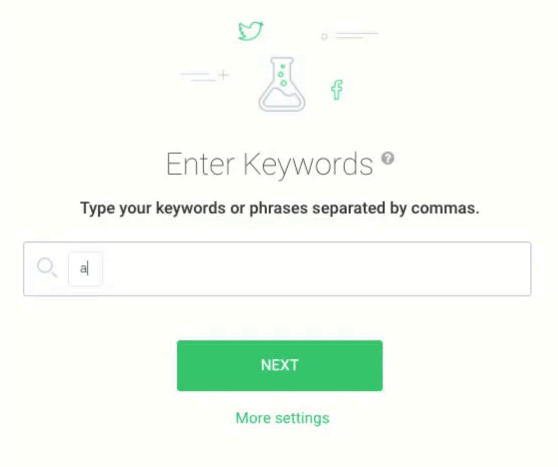You’ll see all kinds of companies at war with each other, constantly changing and adapting to meet the needs of the market; but how do they maintain such a competitive playing field?
It’s all because of competitor analysis.
Businesses can keep themselves level or push past each other because they are monitoring what each other does.
Competitor analysis has become a vital part of reaching for success and keeping your products at the top of their game. Once you start, you’ll wonder what life was like before you found it.
Why Competitor Analysis?
This is the big question; why should you even carry it out in the first place?
You might be surprised to discover that it’s actually a pretty important part of running a business. Yes, it’s a big task, and it can take some time, but here are some of the excellent benefits you can gain from it:
Contents
You Will Learn How To…
- Identify new market opportunities and increase your shares as a result. A good example would be when Facebook realised that Instagram was its biggest competition, and so they acquired it instead of fighting it.
- Exploit competitor weaknesses to turn their customers over to your product. Think of Apple smartphones having marketing shares in the west, and compare that with Xiomi smartphones being extremely cheap and good products.
- Provide detailed information to help you plan your future marketing strategies. For example, you can find out where the traffic to your website is coming from, as well as the market channel.
- Help you to make better decisions that are well-informed due to your new information
- Allow you to better develop your product and engage with your target market
Stats and Facts About Competitor Analysis
Below, you will find a few statistics and figures that relate to competitor analysis, reinforcing why it is such an important part of running a successful business:
Social Media Advertising:
- Revenue in the Social Media Advertising segment amounts to $100,927m in 2019.
- Revenue is expected to show an annual growth rate (CAGR 2019-2023) of 24.5%, resulting in a market volume of $242,724m by 2023.
(Source)
Search Advertising:
- Revenue in the Search Advertising segment amounts to $113,005m in 2019.
- Revenue is expected to show an annual growth rate (CAGR 2019-2023) of 7.3%, resulting in a market volume of $149,918m by 2023.
(Source)
Mobile Search:
- In 2018, mobile search was the first choice for residents of the USA.
- The mobile share for organic search has risen from 27% in 2013 to 57% in 2018.
- Google remains top on mobile for paid search clicks with 66% of the market.
(Source)
Adapt and Change
Business is all about learning where you are going right, but also where you are going wrong. Looking at your mistakes and changing your marketing based on them is an essential part of the process.
You need to learn to adapt and change, which is exactly what competitor analysis does.
There are only two companies that have no competition, and they are both in pharmaceuticals. In fact, if you are running a regular company and you have no competition, it is likely that you’re doing something wrong.
Companies are always at war with each other, just look at the way places like McDonald’s and Wendy’s interact with each other on Twitter as a prime example.


“Competition is always a good thing. It forces us to do our best. A monopoly renders people complacent and satisfied with mediocrity.”
– Nancy Pearcy
Find Your Competitors
You need to actually find your competitors first because you can’t really do much if you don’t know who they are. There are a couple of different ways you can track them down:
- Google Search
This is the classic option and should be the first one you use:

- Google Ads.
Take a look at
Research paid ads for your industry keywords; your competitors are likely to be listed there:

- Internet Monitoring Tools
These make the process easier, not only finding your competitors but analysing and assessing them as well. Brand24 is an excellent example of this in action:

- Your Customers.
Use their knowledge, find out what they were considering before they came to you. Learn from them.
- Trade Publications.
This is a goldmine for competitor names and you can get them in physical or digital format. Have a flick through and see how many you discover.
Analyse Your Competitor’s SEO Efforts
You can move on to delving deeper into their SEO now, and there are a couple of ways that this can be split up.
The first thing you need to do is check out their content. Are their articles professionally written and well structured? Do they use strong keywords, interactive components, and gripping headings? All of the little things combine together to create a pretty sizeable impact.
Take a look at the keyword gap analysis as well, this is a list of keywords that they rank for, but you don’t.
Once you have it, get started on implementing them into your content. You can also see if they have strong backlinks and compare them to your own to get a good idea of where you stand. This will also help you determine why you might not be ranking as highly as they are, and who you should be reaching out to for good links.
Have a look at the backlinks audit via Semrush tool:

Analyse Your Competitor’s Social Media Presence
Every business has at least one social media page, and they have to because this is how they get new customers and keep up with the times. You can search for the pages yourself, or use a monitoring tool like the one I suggested earlier. Once you’ve created your project, you can work on the analysis side of things:
Step 1
- Analyse how often they post on social media. Is the content being well received by the audience? Are there seasonal changes in the amount of content posted?
Step 2
- Check out the sentiment analysis side of things. Is the general tone towards posts positive, negative, or neutral? This can be used in your own business as well.
Step 3
- Look at the brand awareness. This includes mentions and comments, as well as sentiment, to see how recognisable the brand is.
Step 4
- Measure the social media reach of the hashtags they use, and use the results to improve your own.

Understand How Your Competitors Market Their Product
You need to look at the way in which they advertise and market to their target audience.
Who is their ideal customer?
How are they viewed?
Where are they going right that you’re going wrong?
Analyse everything from their social media profiles and website to little interviews and publications across the web; even their newsletters. The results will give you a general idea of what they are doing and why it works so well. It might even give you a few ideas about how they plan to improve their current product and strategies.
Look at Your Competitor’s Pricing
A lot of the time, a customer decision comes down to a combination of features and pricing, so knowing what the competition is charging is essential.
You can determine if you are charging the right amount, but also see if you have any advantages over the current market. There is also room to see if you are able to add any new features that competitors offer, but you do not.
How to Write a Competitor Analysis
Once you have collected all of the relevant information, you need to put it together to create a clear analysis of your competitor. Here’s how you write it:
– Set your priorities. This all depends on what the aim of your competitor analysis project is.
– Take a look at their strong and weak features, especially if you want to analyse the big competition.
– Think about where you can improve and the features you could add in order to be more desirable to customers.
– Distribute the results across various departments within your company for an outside opinion, and maybe even a few ideas.
Tools for Competitor Analysis
Here are a few of my favourite competitor analysis tools, some of which even have further digital capabilities to really help your business get off the ground and work your way up the rankings.
- Brand24: One of the best tools on the market, Brand24 has just about everything needed to keep you on track with your business and competitors. Track down their hashtags and see the ways in which they are being used to improve business. Scan backlinks to see how you compare to them, and where you might be missing out on some seriously good traffic generation.
- Semrush: In addition to being a massive SEO tool, it also has an exceptional competitor analysis feature. It looks at everything from keywords and URLs to backlinks, ensuring that you have the best and most detailed results possible. The dashboard they provide is really easy to navigate and understand, so you always know exactly what’s going on and where.
- Ahrefs: This is an excellent SEO tool for competitor analysis, allowing you to check any URL and keywords you like to see how they are being utilised. It even gives you a rough idea of the traffic that is generated to those websites. The dashboard gives you detailed results, so you can take a good look at the analytics being provided. It’s perfectly suited to all of your SEO needs.
- Feedly: This is a great way to check up on what your competition is doing from the comfort of a single dashboard. It takes a lot of the time and hassle out of competitor analysis; storing and organising content as it is published so that it’s ready for you to view. Interestingly, it can even be integrated with Sprout Social (below).
- Sprout Social: This is the perfect tool for social media competitor analysis, as it will help you to figure out exactly how much content they are pushing, and if their customers are getting the message. It provides you with a detailed analysis and metrics, showing you everything you need on the same dashboard. Packed with great features, it has pretty much everything you need.
To Conclude
Competitor analysis is important, easy, and can really help your business on the road to success.
It’s an on-going process and one that can be made easier with the use of various tools to help you discover more about what’s happening outside of your own company.
It’s time to take a look out the window and see just how much you can improve, as well as how many new customers you can gain.
- About the Author...





